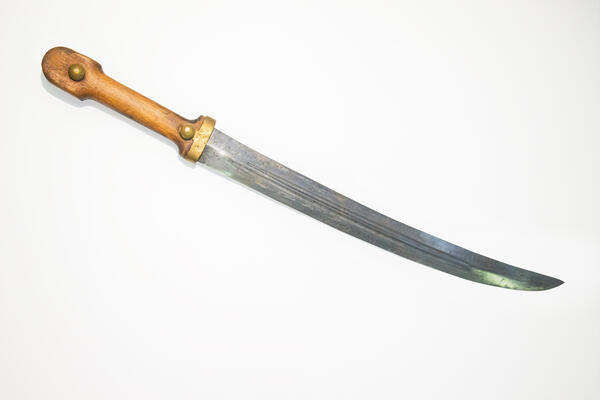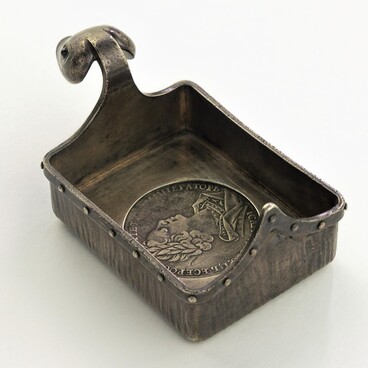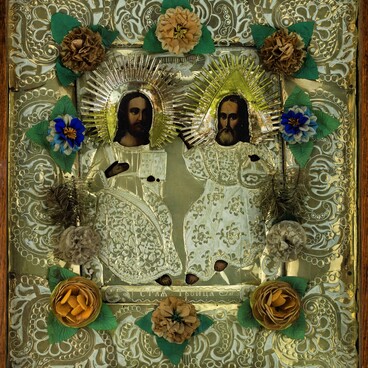The Russian army rearmament began with the appearance of new quick-fire artillery in the army and the change in combat strategy and tactics in the early 20th century. The command decided to supply some military units and branches with new daggers instead of shashkas which were long and therefore inconvenient in close combat.
In 1907, a crooked soldier’s bebut dagger was put into service in the Imperial Russian army by order No. 287 of the Military Department. Since 1840, it was part of the Kuban Cossacks uniform. A fascine knife with a sawtoothed back or an ax was an alternative to bEbut.
“Bebut” means “leg” or “thigh” in Persian. By 1907, that was the name of almost every dagger with a curved blade at the end. From 1907 till 1917, about 100 thousand such daggers were produced at Zlatoust, Arti, and Izhevsk Arms Plants. The length of the blade allowed to use the weapon in slashing, and the slight curve did not interfere with stabs.
Bebut was in service up to the Russian revolution of 1917. It was the favorite weapon of the so-called “plastUns” 一 the foot Cossacks in Kuban Cossack Host (before the Black Sea Cossack Host) which carried out guard and reconnaissance service in the Kuban. Plastuns were recruited from poor Cossacks who could not afford to buy a horse.
On foot, the soldiers wore the dagger on the belt near the buckle, and in mounted formation, they moved it to the left side. During the Russian Civil War, both Red and White Army soldiers used the bebut. Since 1918, foot militiamen were armed with it, while the mounted militia used shashkas.
Daggers were kept in wooden leather-covered sheathes. A military unit number was usually stamped on the sheath and the hilt.
The displayed bebut dagger was donated to the museum in 1952 by the wife of a participant of the battle of Maryanovka participant. That was the largest fight of the Civil war on the Omsk region territory.
In 1907, a crooked soldier’s bebut dagger was put into service in the Imperial Russian army by order No. 287 of the Military Department. Since 1840, it was part of the Kuban Cossacks uniform. A fascine knife with a sawtoothed back or an ax was an alternative to bEbut.
“Bebut” means “leg” or “thigh” in Persian. By 1907, that was the name of almost every dagger with a curved blade at the end. From 1907 till 1917, about 100 thousand such daggers were produced at Zlatoust, Arti, and Izhevsk Arms Plants. The length of the blade allowed to use the weapon in slashing, and the slight curve did not interfere with stabs.
Bebut was in service up to the Russian revolution of 1917. It was the favorite weapon of the so-called “plastUns” 一 the foot Cossacks in Kuban Cossack Host (before the Black Sea Cossack Host) which carried out guard and reconnaissance service in the Kuban. Plastuns were recruited from poor Cossacks who could not afford to buy a horse.
On foot, the soldiers wore the dagger on the belt near the buckle, and in mounted formation, they moved it to the left side. During the Russian Civil War, both Red and White Army soldiers used the bebut. Since 1918, foot militiamen were armed with it, while the mounted militia used shashkas.
Daggers were kept in wooden leather-covered sheathes. A military unit number was usually stamped on the sheath and the hilt.
The displayed bebut dagger was donated to the museum in 1952 by the wife of a participant of the battle of Maryanovka participant. That was the largest fight of the Civil war on the Omsk region territory.



